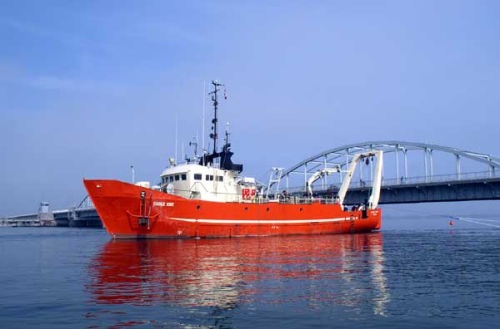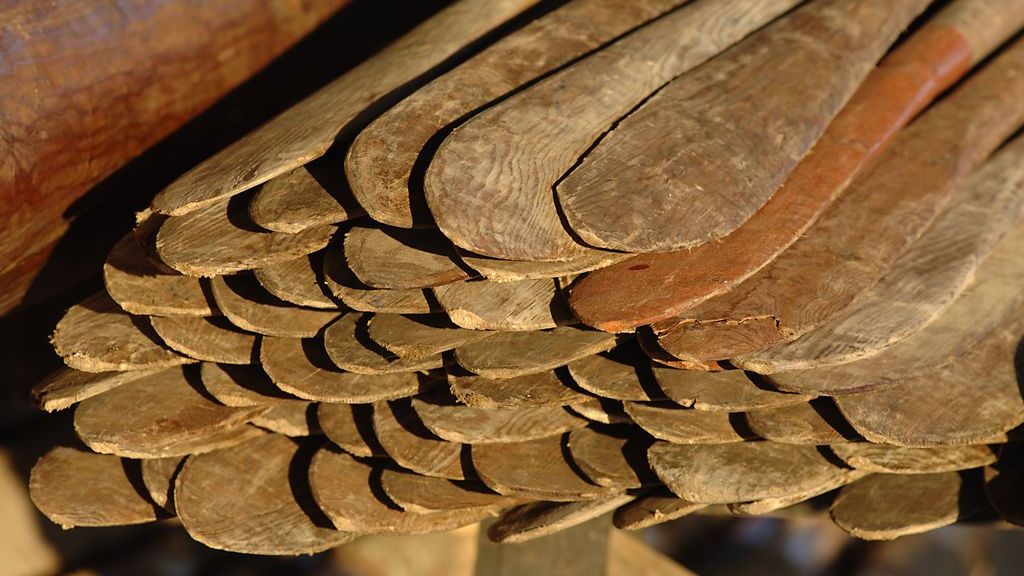The crew on 'Cable One' have tried a lot of different things, but during 14 days of July they will try something completely new.
The specialties of the ship are complicated diving jobs and laying out cables on the bottom of the ocean. One of the more peculiar jobs was when 'Cable One' and the crew prevented an oil disaster in the Baltic.
The 225 metres long Chinese oil tanker 'Fu Shan Hai' sank in the Baltic, and authorities feared that 1.600 tons of oil would leak, creating a large oil pollution. The task of 'Cable One' was to seal the oil tanks and later pump away oil and diesel from the wreck of 'Fu Shan Hai.' 'Cable One' also had to remove the masts of the Chinese oiltanker to prevent danger for other ships.
Just in Case
But from the beginning of July it is not a wrecked chinese tanker but a 30 metres long Viking ship on a test sail, 'Cable One' is assisting, as an escort ship on the long way from Hundested to the Orkneys.
"We've chosen 'Cable One' due to the great of the North Sea of the crew. The North Sea will be the first great challenge for the Sea Stallion," the skipper of the Sea Stallion, Carsten Hvid, says.
The Viking Ship Museum made a contract with the owners of 'Cable One' - JD-Contractor - for at least 14 days, in the hope that the Sea Stallion after that time has reached a harbour in the Orkneys. After this, a Scottish escort ship will escort the Sea Stallion through the difficult waters north and east of Scotland and all the rest of the way to Dublin.
The board of directors of the Viking Ship Museum have demanded that an escort ship will constantly follow the Sea Stallion. In case of an accient on the Sea Stallion or a wreckage, the escort ship can help.
Test sailing is not safe
"We've done everything we could to minimize any risks concering the historic test voyage of the Sea Stallion. For three years, the crew have practised in a long series of test sails, getting to know the ship and learning to sail it. No one have sailed a Viking warship like the Sea Stallion for the last 900 years. Basically, the purpose of the practising has been to regain a knowledge lost a long time ago. However, even though we've done everything we could to improve the security, it is never safe to sail an open ship through some of the most challenging waters of Europe. It was risky in the Viking Age - and it is risky today. That's the reason for the escort ships, who can help us if the worst comes to the worst," Carsten Hvid explains.
North of the Skaw
Earlier the plan was for the Sea Stallion - if allowed by the wind - to sail through the Limfjorden and then wait in Thyborøn for the right wind for crossing the North Sea.
But with the cooperation with 'Cable One' new plans have been made; some parts of the Limfjorden are too shallow for 'Cable One.' Now, the Sea Stallion will most probably head for the Skaw on its way to Ireland.
Dependent on the wind, the Viking Ship Museum thinks the Sea Stallion will spend 2-5 days crossing the North Sea. But under the best of conditions - a fresh or strong breeze from the southeast and a relatively small swell - the Sea Stallion will reach the Orkneys even faster and even press 'Cable One' in a race across the North Sea. 'Cable One' can reach a top speed of 14 knots - just below the presumed top speed of the Sea Stallion.
Facts
'Cable One'
Length: 35,3 m
Width: 9,5 m
Draft: 3,8 m
Speed: 12-14 knob



